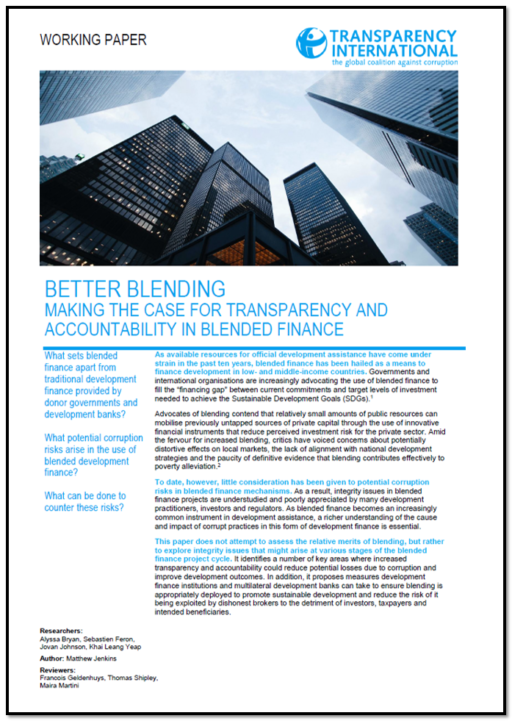Better Blending: Making the Case for Transparency and Accountability in Blended Finance
Description
As available resources for official development assistance have come under strain in the past ten years, blended finance has been hailed as a means to finance development in low- and middle-income countries. Governments and international organisations are increasingly advocating the use of blended finance to fill the “financing gap” between current commitments and target levels of investment needed to achieve the Sustainable Development Goals (SDGs).
Little consideration has been given to potential corruption risks in blended finance mechanisms. As a result, integrity issues in blended finance projects are understudied and poorly appreciated by many development practitioners, investors and regulators. As blended finance becomes an increasingly common instrument in development assistance, a richer understanding of the cause and impact of corrupt practices in this form of development finance is essential.
This paper explores integrity issues that might arise at various stages of the blended finance project cycle. It identifies a number of key areas where increased transparency and accountability could reduce potential losses due to corruption and improve development outcomes. In addition, it proposes measures development finance institutions and multilateral development banks can take to ensure blending is appropriately deployed to promote sustainable development and reduce the risk of it being exploited by dishonest brokers to the detriment of investors, taxpayers and intended beneficiaries.
Authors
Matthew Jenkins
Researchers:
Alyssa Bryan, Sebastien Feron, Jovan Johnson, Khai Leang Yeap
Date
18/12/2018
Tags
 Download PDF
Download PDF
